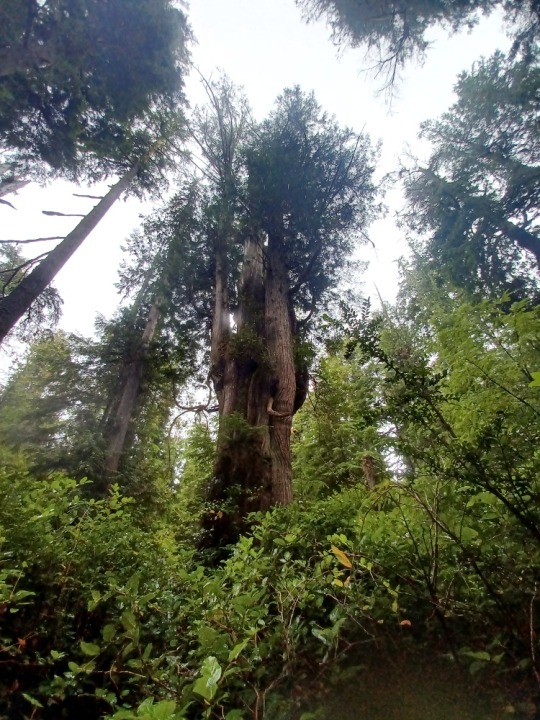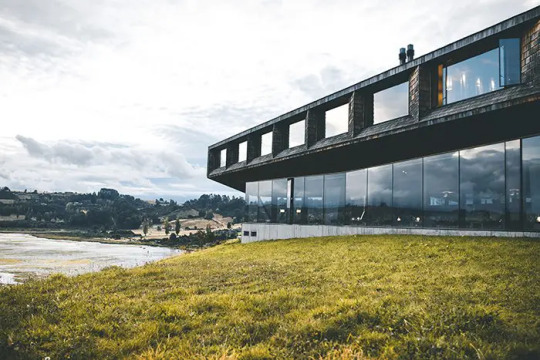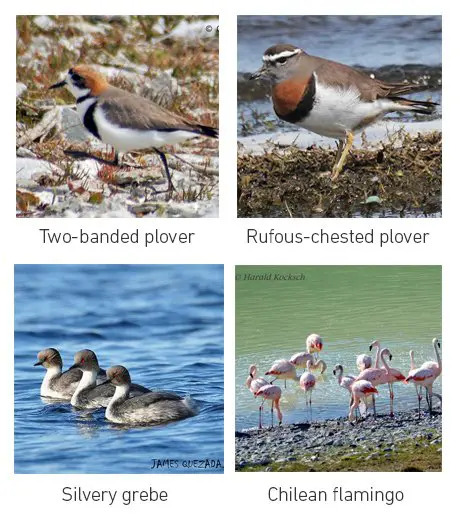#hudsonian whimbrel
Note
Well, now I need to know your favourite animal~!
HUDSONIAN WHIMBREL HUDSONIAN WHIMBREL HUDSONIAN WHIMBREL!!!

[By Félix Uribe, CC BY-SA 2.0, https://commons.wikimedia.org]
look at it. the eyeliner, the feathers 🥺🥺🥺 they've split off from european whimbrels fairly recently!! i did a project on them in college and i adore them so
7 notes
·
View notes
Text


My apologies for the radio silence, folks! The past couple of weekends have been super busy--but with a lot of great stuff!
Weekend before last was Wings Over Willapa, the birding and nature festival that happens on and around Willapa NWR in the very southwest corner of Washington. It's one of my favorite events throughout the year, and I have been involved from the very beginning back in 2018. This year I actually got to be a tourist in addition to a tour guide, getting to explore the old growth cedar forest at Ellsworth Canyon with a Nature Conservancy employee. it was incredible getting extra perspective on this special place. I also got to guide tours through even more old growth cedar at Long Island on Saturday, someplace that I never, ever, ever get tired of. I love how the thousand-plus year old cedars have crowns on the top, since the storm winds often shear off the trees' leaders, so another must then sprout. It gives them more personality.
Right after that I hustled on over to Loomis Lake State Park to lead my beach tour. We explored the dunes, and I showed the participants how to tell the difference between the native Leymus mollis dune grass, and the invasive Ammophila grasses that have taken over that habitat. We found some neat things while beachcombing, like marine snail egg casings, and had some great wildlife sightings, like lines of brown pelicans coasting over the waves, and a lone Hudsonian whimbrel picking its way along the beach in search of food.
That evening we were treated to the keynote speech by author and conservationist Paul Bannick, who spoke on how woodpeckers and owls are very often keystone species in their habitats. I had just enough time that night to get some sleep before peeling myself out of bed for an 8am tour that I led around the Art Trail and Cutthroat Climb at the old Refuge headquarters. I am in love with that place, and I am overjoyed the trails are open to the public after extensive improvements were made earlier this year.
This past weekend was just as much fun! I have been very excited to see the development of Snow Peak's new campfield in Long Beach. For those who aren't aware, Snow Peak is a quality outdoor supply company based in Japan, analogous to REI or Patagonia. Each of their flagship stores has a campfield within a couple of hours which has camping and events. The Long Beach location is associated with the Snow Peak store in Portland, and is just about ready for a soft opening!
I have been hoping to get in touch with folks there since I really, really want to see more ecotourism out in the Long Beach and Willapa Bay area. We're so lucky to have so much beautiful nature out here, and I want to see more people getting to enjoy it. I was thrilled when a representative contacted me some weeks back inviting me to teach a couple of mushroom foraging classes during this year's Snow Peak Way, an annual camping event that draws hundreds of people and which was held this year over on the east side of the Cascades in Tygh Valley.
To say that I had a great time would be an immense understatement. I have been to a lot of festivals, conventions, and other events over the years, and this had all the things that I love about these events, without the things I find obnoxious. I made a lot of friends and connections, was fed VERY good food, and if my experience with borrowed gear is any indication, Snow Peak is well worth the hype. I am very much hoping to get to partner more with these folks once the campfield is open and running.
There's no time for downtime right now, though. I'm back in Portland later this week for several classes, and I have less than three weeks before I'm on the road to Missouri again for my fall visit. In between now and then I have several writing projects due, including the first deliverables for The Everyday Naturalist, plus various other tasks around the home and farm. Things will slow down once we get closer to the holidays, but for now it's all go, all the time!
#camping#forests#Wings Over Willapa#Willapa National Wildlife Refuge#Washington#Oregon#Snow Peak#Snow Peak Way#old growth forest
8 notes
·
View notes
Text

Marbled Godwit; Hudsonian Godwit, Eskimo Curlew, Whimbrel. From the national Geographic series…it’s a group of birds that appeal to me personally and I think he captures them well, although without any really interesting behaviour or poses.
art by major allan brooks
text by barry kent mackay
support barry kent mackay on ko-fi
4 notes
·
View notes
Photo

Hudsonian whimbrel (Numenius hudsonicus)
Photo by Robyn Waayers
#hudsonian whimbrel#whimbrel#numenius hudsonicus#numenius#scolopacidae#scolopaci#charadriiformes#aequorlitornithes#neoaves#neognathae#aves#therapoda#archosauria#sauropsida#reptilia#tetrapoda#vertebrata#chordata
17 notes
·
View notes
Photo

Spring
Still working through my terror bingo card from last year 😅But the inspiration struck so here. have a hudsonian whimbrel and a compass i guess.
#the stag speaks#terrorbingo2020#terror bingo#the terror#the terror amc#hudsonian whimbrel#birds#my art#digital art
24 notes
·
View notes
Photo

A new variant has been added!
Hudsonian Whimbrel (Numenius hudsonicus)
© Barry Kent MacKay
It hatches from arctic, bold, bright, brown, coastal, eastern, extensive, global, large, little, long, other, pacific, rare, short, shrill, similar, and uncommon eggs.
squawkoverflow - the ultimate bird collecting game
🥚 hatch ❤️ collect 🤝 connect
0 notes
Text
Chiloe and its Migratory Birds

More than 20 migratory bird species come to Chiloe every year. Some come from the south, others from the north and still others from the Andes Mountains. Their favorite spots are coastal marshes like Pullao Wetlands and evergreen forests, where they build nests, rest and feed.
Migration occurs according to changes in climate, availability of food and reproductive needs. It is a seasonal cycle of comings and goings during which these birds seek to take advantage of favorable conditions in different areas.
Migratory birds can be classified into different groups based on their movements:
Boreal Migration: These species leave their nesting spots in the Arctic to travel thousands of kilometers south during the boreal winter. They even turn up in Tierra del Fuego, meaning they have flown from one side of the world to the other. The following birds from this category can be found in Chiloe:
Greater yellowlegs (tringa melanoleuca): This bird arrives from the Arctic to South America each summer. In Chiloe it is usually found alone or in small groups eating invertebrates in streams and along the shore in areas with protective plant cover.
Baird’s sandpiper (calidris bairdii): This frequent visitor arrives to Chiloe in the summer and moves along interior coasts in flocks of 10 to 20 birds. It can also be found along beaches on the open sea.
Eurasian whimbrel (numenius phaeopus): This is one of the most common migratory species during Chiloe summers. It is usually found alone when on the beach, while it prefers groups of hundreds in marshes. It travels from Alaska and Canada to Tierra del Fuego.
Hudsonian godwit (limosa haemastica): This is the bird that escapes the boreal forest winter in the largest numbers to come Chiloe. The marshes on the eastern side of the archipelago are its main feeding grounds. An estimated 20% of the world population of Hudsonian godwits is found at Pullao Wetlands.
Western osprey (pandion haliaetus): This raptor arrives to Chiloe from the southern-central United States in search of fish especially from large inland rivers.
Ruddy turnstone (arenaria interpres): This is a beautiful, but scarce, Chiloe shorebird. These can be found in small flocks feeding near the water. If you are patient and lucky, you might see them turning over rocks to find their food.

Neotropical Migration: This group migrates from the southern United States, Mexico, Central America and northern South America. The following species can be found in Chiloe:
White-crested elaenia (elaenia albiceps): This is the only neotropical migratory species that nests in Chiloe during the summer. It arrives in October and leaves the archipelago in April to return to the Amazon in Brazil.
Black skimmer (rynchops niger): This bird arrives to Chile from the neotropics in October where it spreads out among the marshes of the Archipelago of Chiloe. It is known for leaving a showy wake as it forages in flight.
Austral Migration: This group includes the species that nest in the southern cone, especially in the region of Chilean and Argentine Patagonia. These birds migrate north during the fall and winter months. Birds of this type found in Chiloe are:
Two-banded plover (charadrius falklandicus): This small shorebird migrates from Tierra del Fuego to Chiloe during the winter. It then returns to extreme southern Chile to nest. Some groups stay in northern areas all year.
Rufous-chested plover (charadrius modestus): This is one of the most common visitors to the Chiloe coast in winter. It feeds in tidal flats, such as Pullao Wetlands, hunting for invertebrates during the low tide.
Silvery grebe (podiceps occipitalis): This small, water bird enjoys diving in the waters of the archipelago of Chiloe until October. In the winter, it nests in the freshwater lakes of Patagonia.
Chilean flamingo (phoenicopterus chilensis): This is definitely one of Chiloe’s most striking migratory birds. It arrives from the Patagonia pampa in autumn and stays until August when it heads back to its inland lake breeding areas.

Altitudinal migration: This group includes species that migrate from and toward the Andes Mountains, central valleys and the coast, where they feed before returning to their breeding areas at higher altitudes. The following species of this type can be found in Chiloe:
Dark-faced ground tyrant (muscisaxicola macloviana): This bird migrates during winter throughout Chile at different times and in varying directions. Then it returns to the foothills above the tree line for reproduction.
Grey-flanked cinclodes (cinclodes oustaleti): This bird is often found feeding in urban areas. It travels from the mountains to the coast during the winter and stays there between April and October.
Patagonia tyrant (colorhamphus parvirostris): This bird migrates from the wooded foothills in southern Chile to the north and sea-level forests to avoid the winter cold and snow. It stays in Chiloe until spring when it returns to its nesting grounds.
It is likely that you will see some of these migratory species during the excursions offered by Tierra Chiloé. If you are interested in birdwatching, our guides are well trained to help you birdwatch in a way that is respectful toward the environment. Whether you are an expert or novice, this experience will connect you to nature in a very special way.
0 notes
Link
Check your calendar: Iit is only late July, but summer is already over for the early breeders up on the tundra. It’s very hard to admit, but raising offspring is done for parent birds such as yellowlegs, ruddy turnstones, sanderlings, semipalmated plovers, Hudsonian godwits, short-billed dowitchers, whimbrels and black-bellied plovers.July is when most of us definitely don’t want to be reminded of fall. School, football, even birds can remind us that we have passed the [...]
0 notes
Text
Exploring the Chiloe Islands in Chile

A land steeped in myth and legend, distinguished by its "Palafitos" or houses built on stilts, evergreen landscapes and enchanting hospitality, the Chiloe Archipelago in Chile is a magical place to visit.
Shaped by the meeting of the land with the sea, the culture of the people here includes innovative architectural techniques, delicious cuisine and mythology rooted in a mix of pre-Columbian religion and legends introduced by European immigrants from long ago.

Flora and Fauna of Chiloe
The variety of both endemic and introduced flora and fauna is so overwhelming, even Charles Darwin was taken aback on his visit here in 1834. Chiloé teems with lush plantlife across its many islands, flaunting Valdivian Forests made up of myrtle, oak, bamboo, hazelnut and cinnamon, to name just a few.
The diversity of these trees tells a story of natural evolution occurring on the islands, from the end of the ice age that gripped the region some 15,000 years ago, through to the colonial era whereby new species arrived on ships, right up to the present day. You can learn all about this horticultural intrigue first-hand on our informative excursions, whether discovering Bosquepiedra Private Park or hiking part of the Sendero de Chile.
In addition to the verdant forests, Chiloé is also home to around a dozen wetlands, including the Pullao Wetland, which is right next to the hotel. Recognized by the Western Hemisphere Shorebird Reserve Network as a ‘site of hemispheric importance’, this sanctuary serves as a vital habitat for an astounding array of wildlife, including the Hudsonian Godwit and the Whimbrel, both carefully protected migratory species.
You can also spot the Chilean Flamingo here, not to mention cormorants, ducks and gulls, all of which can be spotted during an excursion to the Pullao Wetland.
Elsewhere in Chiloé, you can get up close to an impressive variety of animal life, from rare marsupials, the Andean Antelope, Chiloé fox and colocolo cats on the land, to dolphins, black-necked swans and if you’re lucky, maybe even a whale. The archipelago really is a biodiverse haven for all kinds of wildlife.

0 notes